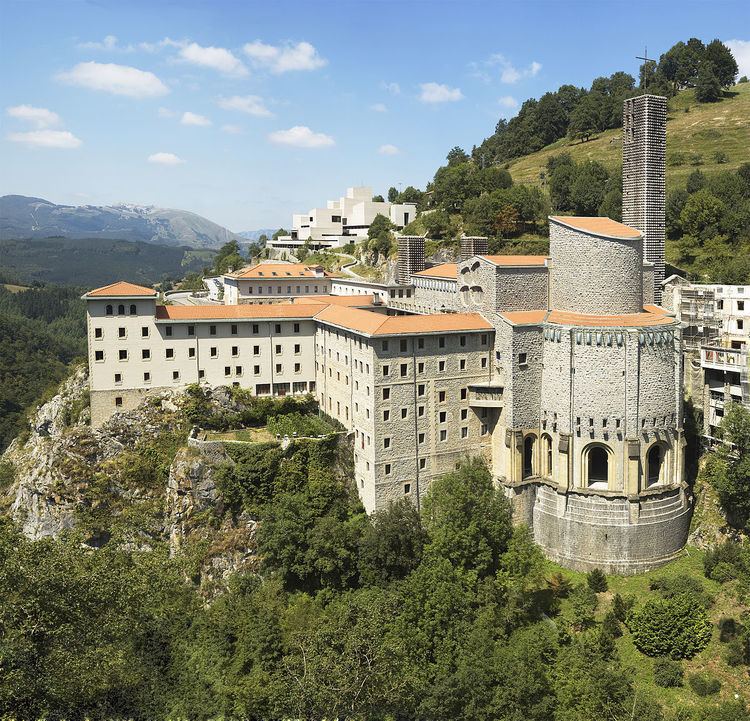Location Arantzazu Denomination Roman Catholic Dedication Virgin of Arantzazu | Authorising papal bull | |
 | ||
Website www.santuariodioropa.it/db/it/ Address Aizkorri-Aratz, Lugar Barrio Arantzazu, 6, 20567 Arantzazu, Gipuzkoa, Spain Similar Aizkorri, Aratz, Sanctuary of Loyola, CUEVAS ARRIKRUTZ‑OÑATIKO KOBAK, Jorge Oteiza Museum | ||
The Sanctuary of Our Lady of Arantzazu [aˈɾants̻as̻u] is a Franciscan sanctuary located in Oñati, Basque Country, Spain. The shrine is a much appreciated place among Gipuzkoans, with the Virgin of Arantzazu standing for the main worship figure and patron of the province along with Ignatius of Loyola.
The place benefits from the highland silence and peaceful atmosphere of the Aizkorri mountain range along with a good road infrastructure, so the place is frequently visited by devotees and regional and foreign tourists alike. It is located in the site where presumably the Virgin of Arantzazu appeared to the shepherd Rodrigo de Balanzategui in 1468. Legend has it, the figure of the Virgin was in a thorn-bush, and his exclamation "Arantzan zu?!" (Thou, among the thorns?!) gave rise to the name of the place. According to the linguistic explanation, the name stems from "arantza + zu", 'place abounding in hawthorn'.
Arantzazu can be found as a female name in Spain in the forms of Arantza and Arantzazu (especially in Biscay and Gipuzkoa) along with Arancha (Spanish spelling) or Arantxa (Basque spelling), much in line with Spanish phonetics.
The place is also a starting point for several mountains trails and circuits for hikers that provide access to the meadows of Urbia and on to the mountain range Aizkorri, to the massif Aloña and to the lands south and east of the shrine. All the trails are well signalled.
Pope Leo XIII granted a Canonical coronation to the image on 13 September 1885. A variant replica bearing its same title was brought to the Philippines in 1959, featuring a standing posture. On 7 June 2016, Pope Francis granted a Canonical coronation to the Philippine image.
The basilica
In 1950 the works for the new basilica were started, and the building was inaugurated five years later. Francisco Javier Sáenz de Oiza and Luis Laorga were the leading architects, and other artists also took part in the work:
The Franciscan convent has been a center for Basque culture even under Franco's repression.
The main festivity in Arantzazu is on September 9.
